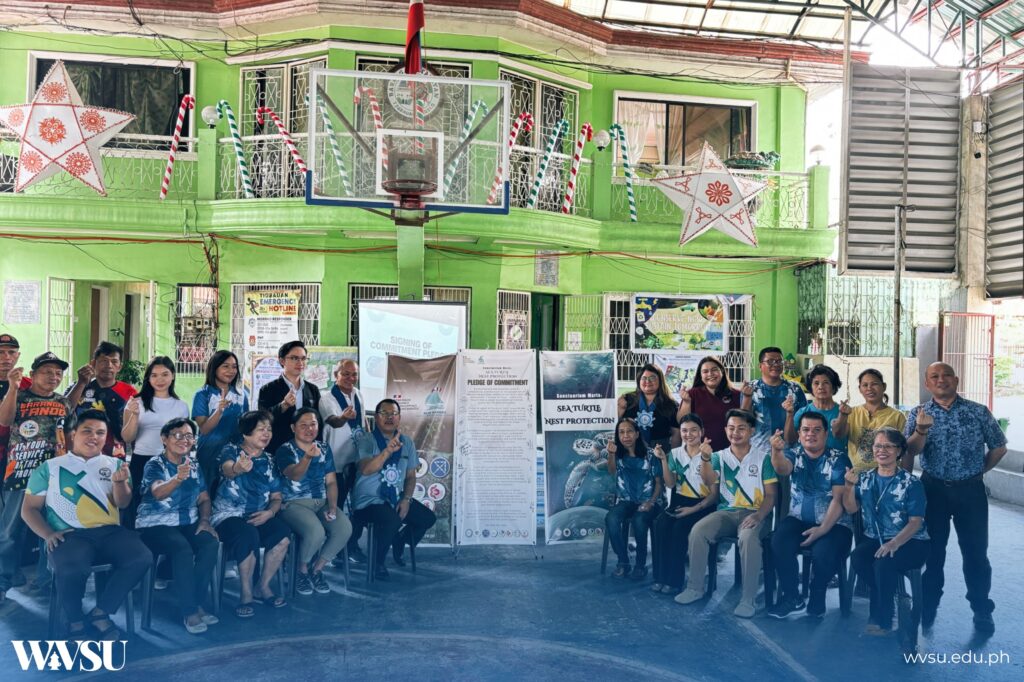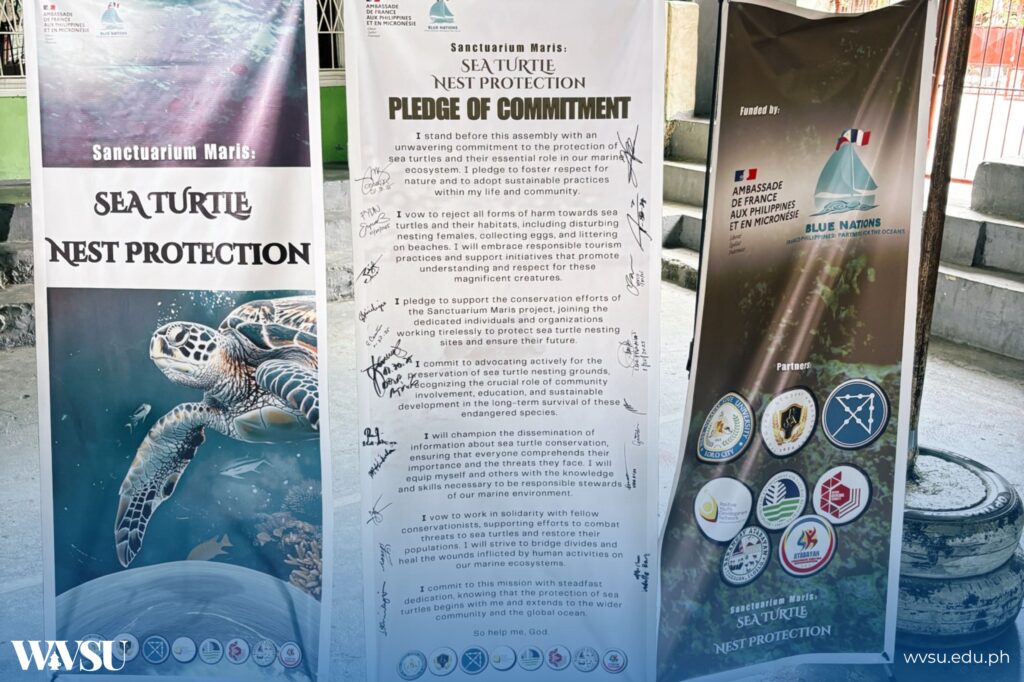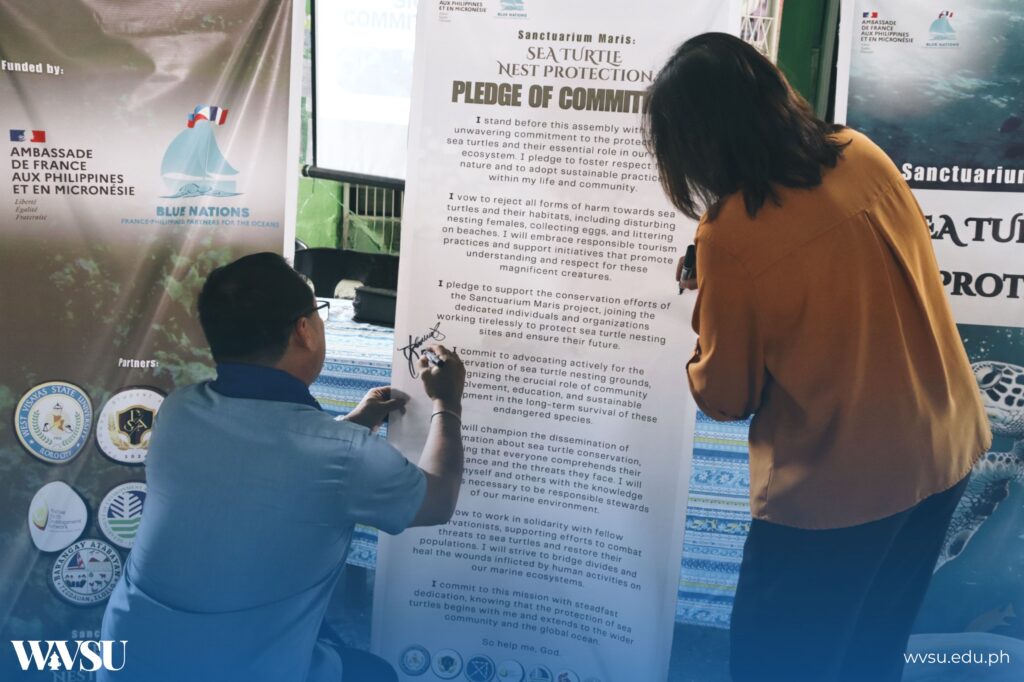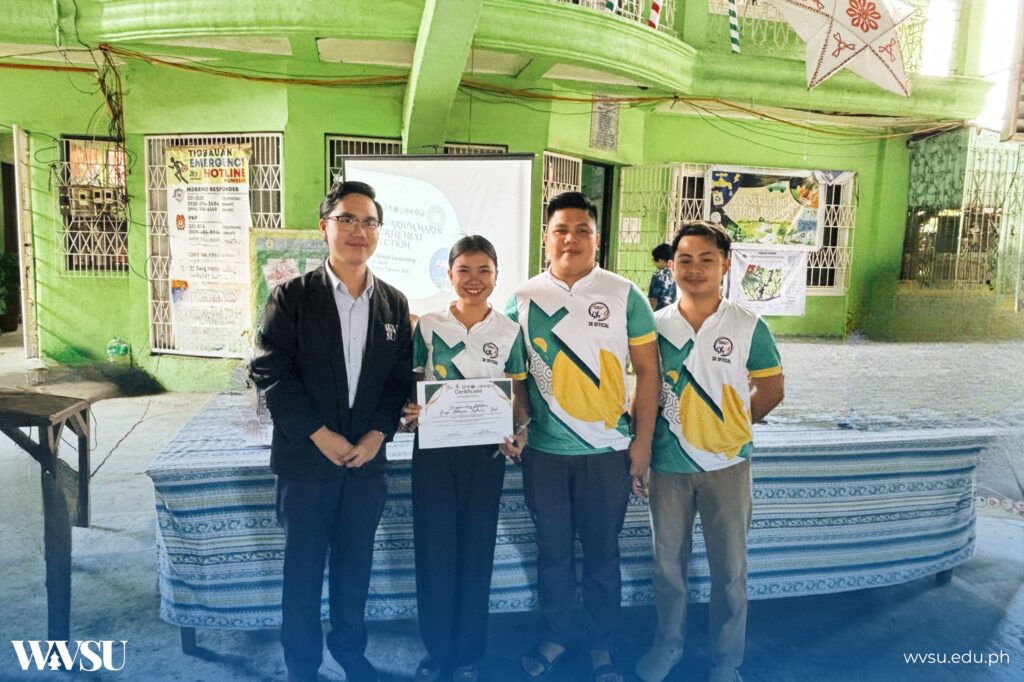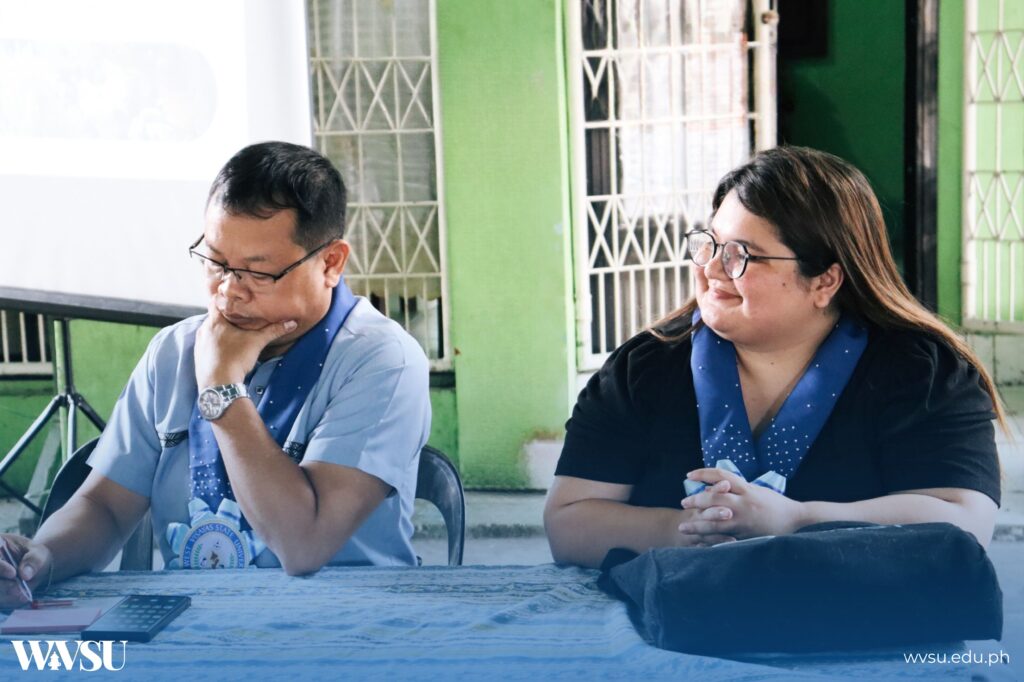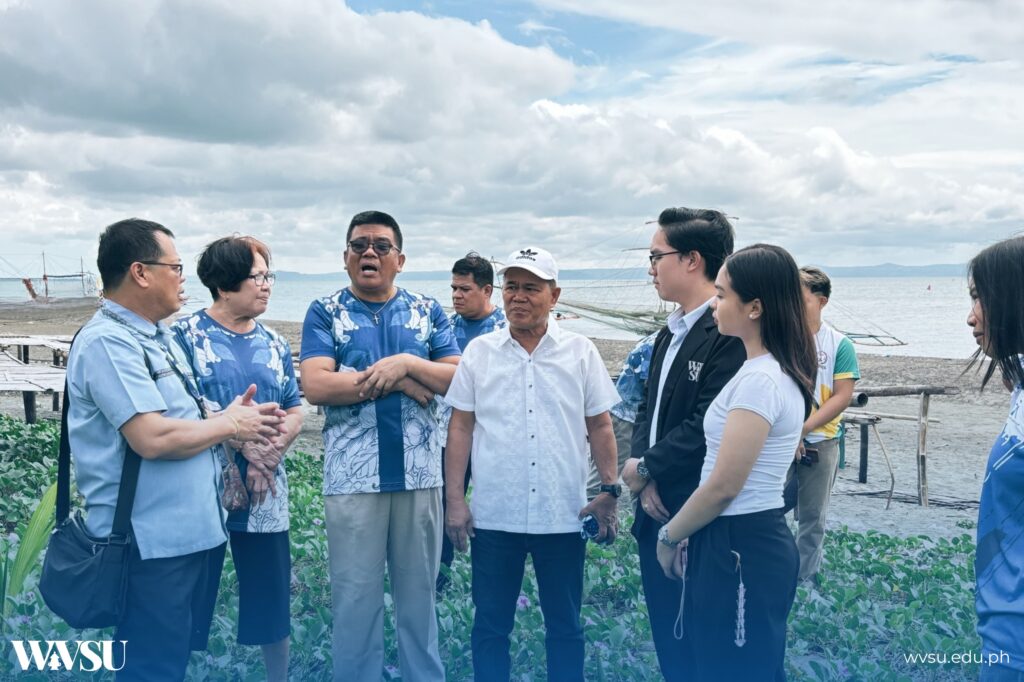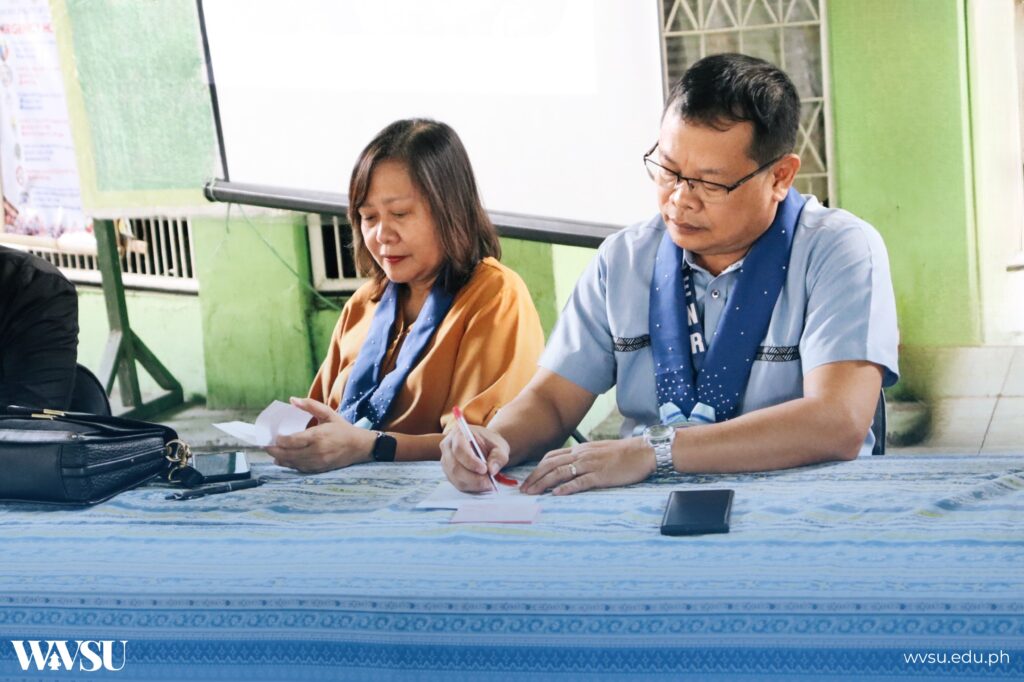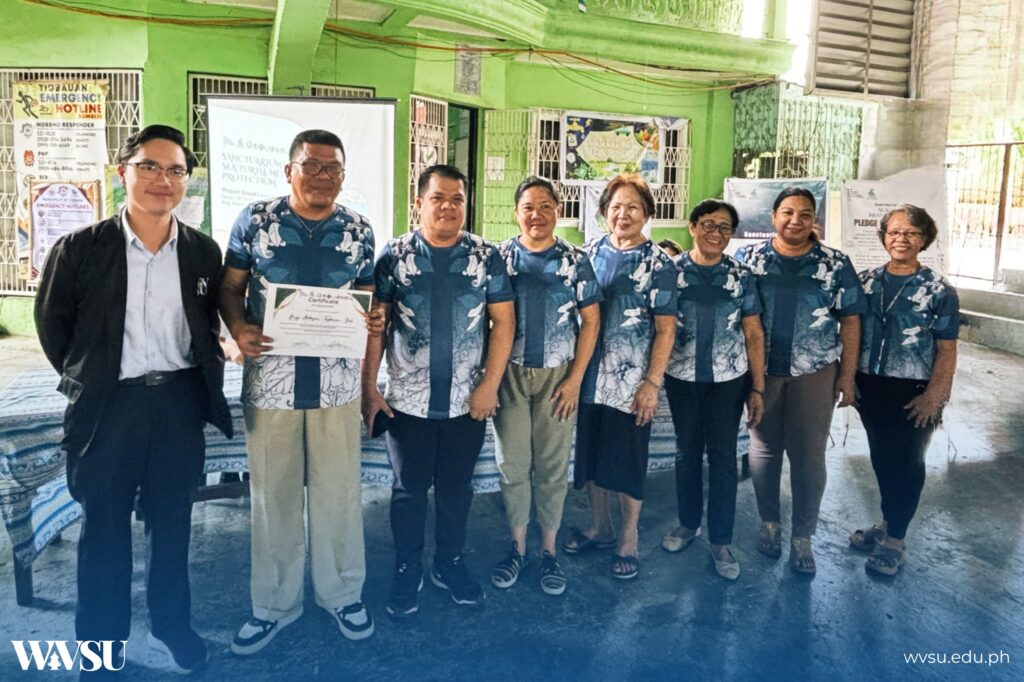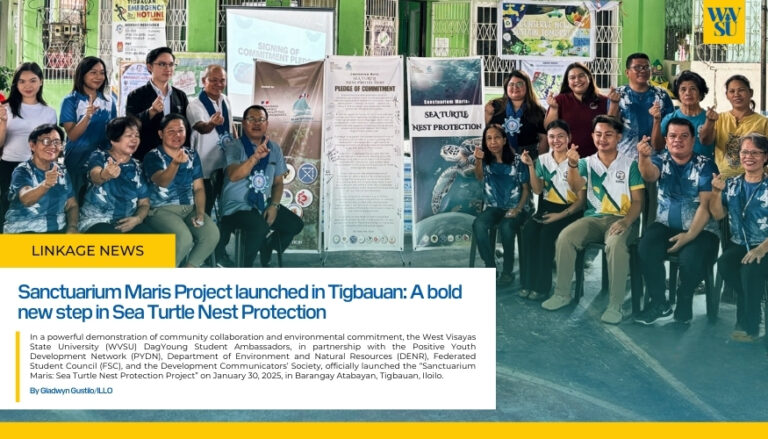In a powerful demonstration of community collaboration and environmental commitment, the West Visayas State University (WVSU) DagYoung Student Ambassadors, in partnership with the Positive Youth Development Network (PYDN), Department of Environment and Natural Resources (DENR), Federated Student Council (FSC), and the Development Communicators’ Society, officially launched the “Sanctuarium Maris: Sea Turtle Nest Protection Project” on January 30, 2025, in Barangay Atabayan, Tigbauan, Iloilo.
The project, funded by the Embassy of France to the Philippines and Micronesia, highlights the university’s commitment to sustainability and volunteerism. As the internationalization arm of WVSU International and Local Linkages Office (ILLO), the DagYoung Student Ambassadors spearheaded the project, demonstrating the power of student leadership in fostering positive change for both local communities and the environment.
A Vital Nesting Ground for Olive Ridley Turtles
Barangay Atabayan is one of the key nesting sites for olive ridley turtles in the Philippines, yet it faces several challenges. These turtles, classified as vulnerable by the International Union for Conservation of Nature (IUCN), are often injured or stranded due to human activities like fishing. Between 2001 and 2011, over 100 turtles were reported stranded, many with injuries. In 2020 alone, 11 turtles were rescued, underscoring the urgency of conservation efforts.
The Sanctuarium Maris project was conceived to address these challenges by not only protecting the turtles but also empowering the community of Atabayan to become active stewards of their natural resources.
A ceremony of Commitment
The ceremony was opened by Prof. Joesyl Marie Aranas, Division Chair, BS Development Communication of WVSU, who read the message from Ms. Edel Carmela Subong-Csoka, Director of the WVSU International and Local Linkages Office. In her message Ms. Edel emphasized the role of education and collaboration in environmental action. “The conceptualization of the Sanctuarium Maris is a product of collaborative concern and efforts that we would like to put into practice and to serve as a beginning of something that will continue in the generations to come”.
Dr. Ma. Pilar S. Malata, Dean of the Office of Student Affairs, shared words of encouragement, emphasizing the importance of collective effort. “WVSU is proud to be a part of this important project, and we look forward to seeing the positive impact it will have on both the environment and the people of Atabayan,” she said.
In a message of commitment, Edgardo M. Rostata, Assistant Regional Director of the Department of Environment and Natural Resources (DENR) Region VI, stressed the significance of governmental support in implementing sustainable environmental practices. “The success of Sanctuarium Maris lies in the collaborative efforts of local communities, educational institutions, and government agencies,” Rostata stated. He underscored the importance of public-private partnerships, noting that DENR’s involvement ensures that the project aligns with national environmental goals and standards. As a government agency, DENR provides critical resources, expertise, and oversight, reinforcing the long-term viability of the project.
Cyresse Ann Achilleos, Strategic Support Unit Head of the Positive Youth Development Network (PYDN), also spoke on the pivotal role youth plays in the project. PYDN’s involvement is instrumental in ensuring that the youth of Barangay Atabayan are equipped with the knowledge and skills necessary to become advocates for sustainable practices.
Dr. Ricky G. Abaleña, Project Consultant and adviser of Young Journalists’ Society, highlighted the importance of education and advocacy in this initiative. The Young Journalists’ Society plays a key role in documenting and sharing the project’s progress, further spreading awareness about environmental issues in the region.
Hon. Edison Camiña, the Punong Barangay of Atabayan, highlighted the importance of the community’s active participation in conservation efforts. Camiña acknowledged that local leadership is essential for fostering a culture of environmental awareness and sustainability, expressing gratitude for the support of WVSU and its partners in this shared responsibility.
The role of WVSU as a leading educational institution was emphasized by Johnric G. Vargas, Board Member of the Federated Student Council. As part of the university’s effort to integrate global and local issues, WVSU’s students are at the heart of the project, spearheading community education and conservation initiatives.
Amabela Fiona Le B. Benid, a student ambassador and Special Projects head, presented the rationale behind the Sanctuarium Maris project. She outlined the critical role Barangay Atabayan plays as a nesting ground for the olive ridley turtle (Lepidochelys olivacea), a species listed as vulnerable by the International Union for Conservation of Nature (IUCN). She also addressed the challenges posed by high rates of stranded and injured turtles, noting that from 2001 to 2011, over 100 sea turtles were reported stranded in the area. In 2020 alone, 11 turtles were rescued from fish traps and other hazardous situations.
The ceremony culminated with the signing of a Commitment Pledge and the symbolic ribbon-cutting to officially launch the project.
A Model for Sustainable Conservation
The Sanctuarium Maris project is a significant step forward in marine conservation. It offers a model for how universities, local communities, and environmental organizations can work together to protect vulnerable species while also benefiting the people who live alongside them.
As sea turtles continue to nest along the shores of Atabayan, the project will serve as a testament to the power of community collaboration. With the combined efforts of WVSU, local government units, and residents, the Sanctuarium Maris project aims to create a lasting impact on the preservation of sea turtles and their habitats for generations to come.
Through the vision of WVSU’s student leaders and the commitment of the Atabayan community, the Sanctuarium Maris project proves that even small, localized efforts can make a global difference in conservation and environmental sustainability.
Story by Gladwyn Gustilo/ILLO
